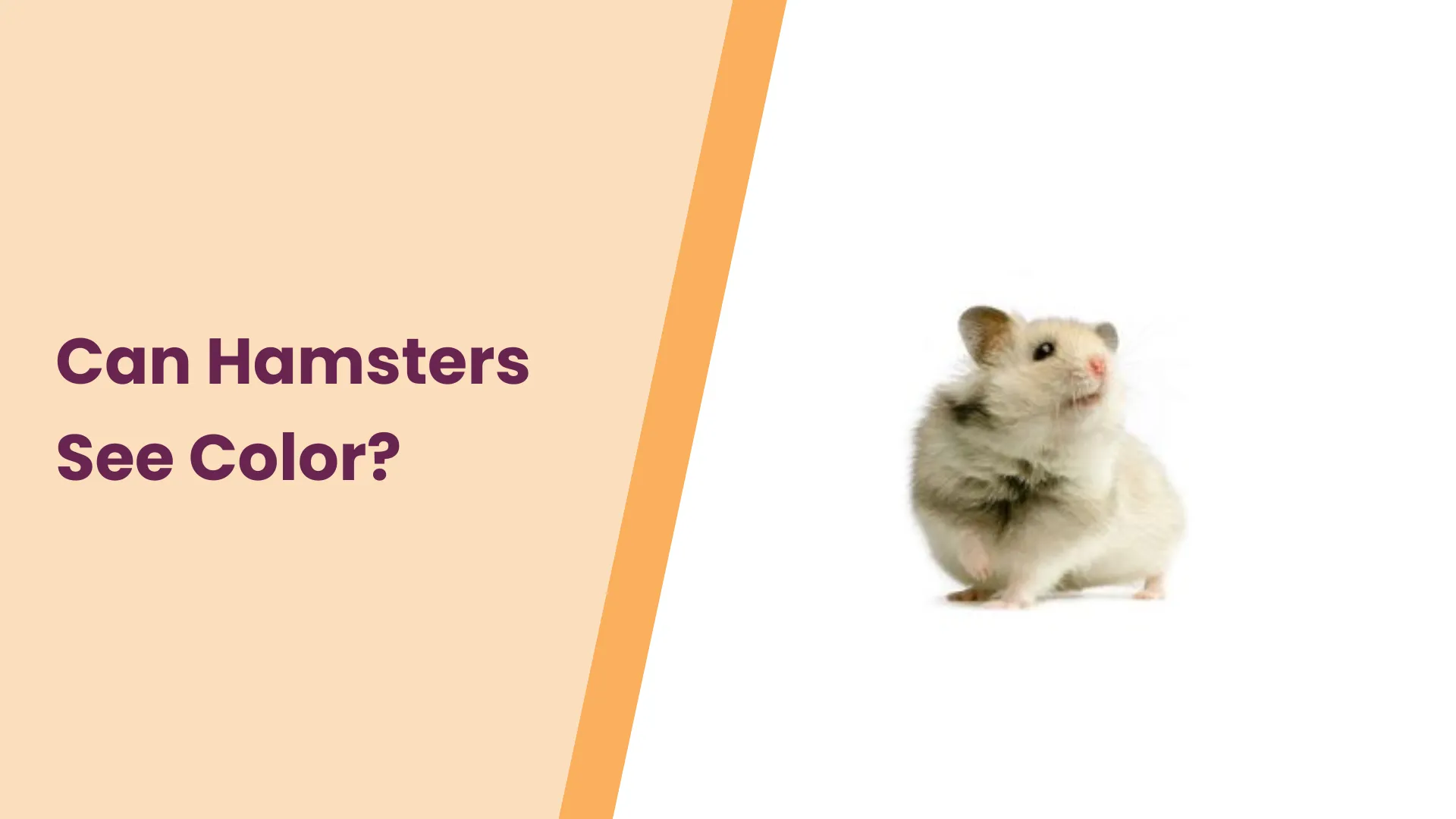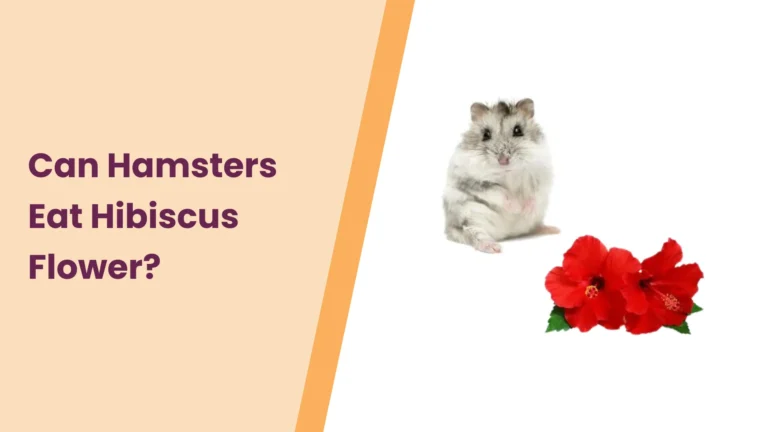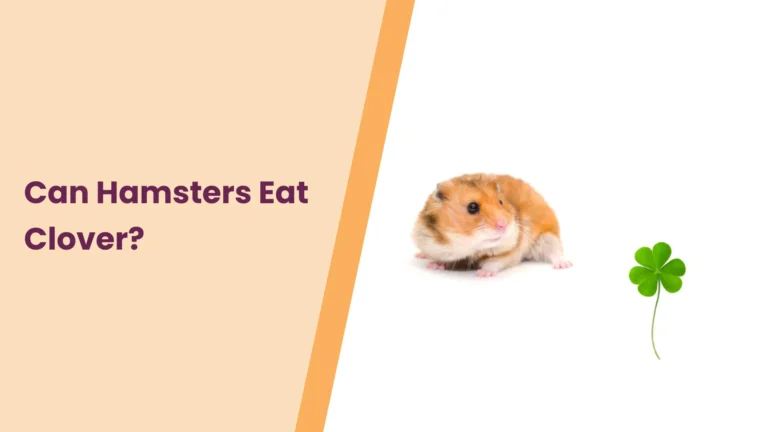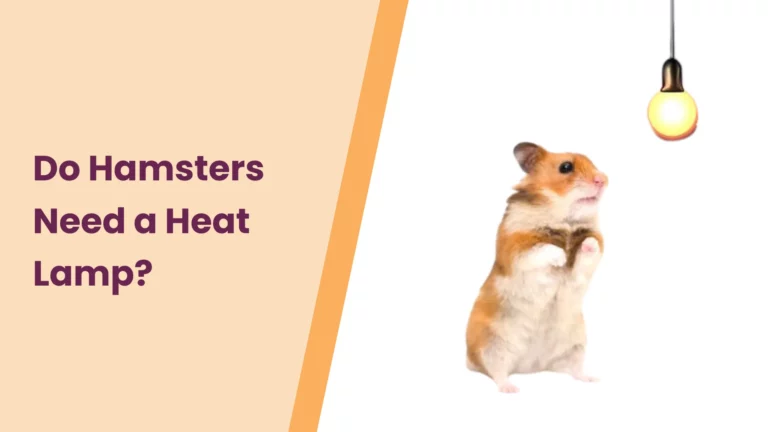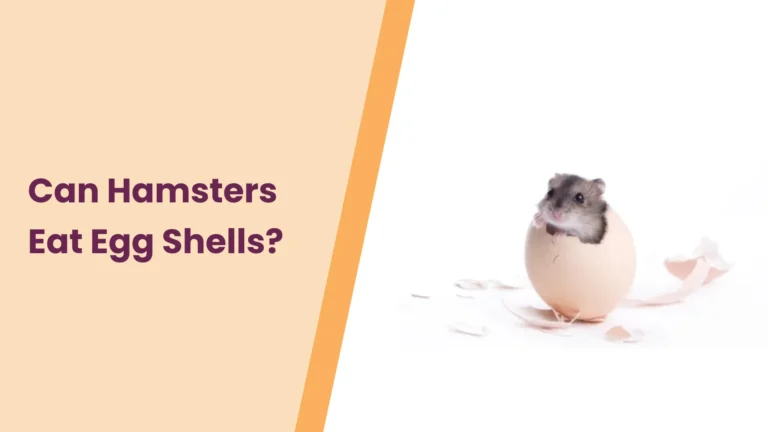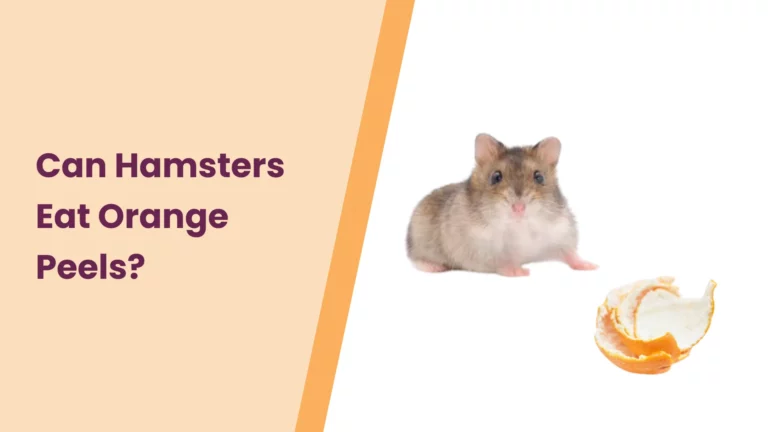Can Hamsters See Color? All You Need To Know
Have you ever wondered how the world appears through your furry friend’s eyes? Step into the fascinating realm of hamster vision as we unravel the mystery behind the question: Can hamsters see color? Beyond the adorable whiskers and tiny paws lies a world where sensory perception plays a crucial role in your hamster’s daily life. In this exploration, we’ll delve into the intricacies of hamster eyes, their limited but intriguing color perception, and discover the secrets that make each glimpse into their world a captivating experience.
So, let’s embark on this colorful journey into the vision of our pint-sized companions, learning how we can make their world even brighter.
The Anatomy of Hamster Eyes
Ever marveled at the tiny, expressive eyes of your hamster? These little orbs play a pivotal role in how your furry friend interacts with the world. Hamsters boast small eyes compared to their human counterparts, but don’t let size fool you – there’s more than meets the eye.
Hamster eyes are designed for efficiency. Nestled within their cozy faces, hamster eyes feature a specialized arrangement of cells in their retinas. This unique setup contributes to their ability to navigate their surroundings, but it also shapes how they perceive color.
Unlike our complex human eyes, hamster eyes lack certain structures that enable a broad spectrum of color vision. The question arises: Can hamsters see color at all? Let’s peel back the layers and explore the intricacies of these miniature windows to your hamster’s soul.
Delving into the science of hamster vision reveals that while they aren’t completely colorblind, their range of color perception is limited. This limitation is due to the composition of their retinas, which contain a smaller number of cone cells responsible for color detection. As a result, their world may appear more muted, with certain colors blending together.
In essence, understanding the anatomy of hamster eyes unveils the unique perspective from which they view the world. Their visual world might not be as vibrant as ours, but it’s undeniably fascinating in its own right. So, let’s continue our journey into the colorful mysteries of hamster vision, where size doesn’t diminish the significance of these captivating little orbs.
Limited Color Perception
Picture the world through the eyes of your hamster – a world where colors may not pop as vividly as they do in ours. While hamsters aren’t entirely colorblind, their color perception is a unique tapestry that adds an intriguing layer to their lives.
Research into hamster vision indicates that these small, inquisitive creatures have a limited ability to perceive colors. Unlike humans, who enjoy a rich spectrum of hues, hamsters primarily rely on a smaller number of cone cells in their retinas, making their color palette somewhat more subdued.
So, can hamsters see color? Yes, but not in the same kaleidoscopic way we do. Reds may appear more like muted browns, and greens might blend into a landscape of similar tones. This limited color spectrum doesn’t hinder their ability to navigate and thrive in their environment, though. In fact, it highlights the resourcefulness of these tiny adventurers.
Imagine your hamster’s world as a beautifully composed painting, where certain colors take on different shades, creating a unique visual symphony. Understanding their limited color perception allows us to appreciate the nuances of their surroundings and adapt our care to their distinctive vision.
As we continue to unravel the mysteries of hamster vision, it becomes clear that their world, though not technicolor, is rich in its own way. Join us on this exploration into the subtle palette of hamster color perception, where every shade tells a story in their charming, miniature universe.
Hamster Vision in Low Light
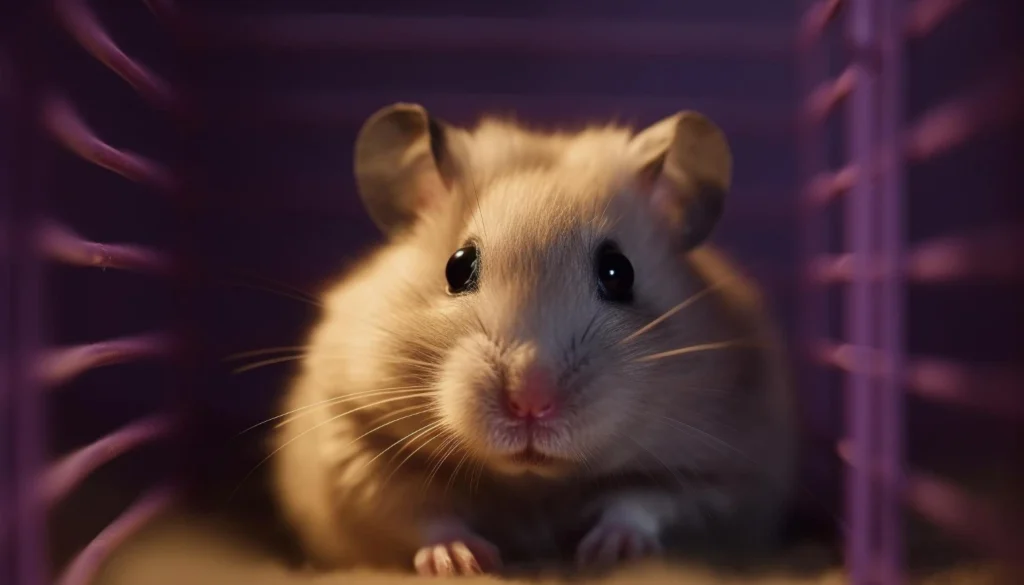
As the sun sets and darkness blankets the world, your hamster is just getting started. These nocturnal explorers are equipped with a unique set of skills, particularly when it comes to navigating their surroundings in low light conditions.
Hamsters, with their tiny yet marvelously adapted eyes, are designed for the night. Their natural habitats often lack the brilliance of daylight, prompting these small creatures to become masters of the moonlit realm. But what does this mean for their vision?
In the cloak of darkness, hamsters shine – not literally, of course, but figuratively in their ability to see well in low light. Their eyes are adept at capturing even the faintest glimmers, and their vision becomes finely tuned to detect movement rather than intricate details or a broad spectrum of colors.
Picture your hamster scampering through their cage at night, their eyes gleaming like tiny beacons in the dark. Their nocturnal lifestyle isn’t just a quirk; it’s a testament to their evolutionary prowess. Understanding their preference for low-light environments gives us a glimpse into the adaptations that make them such fascinating companions.
So, can hamsters see in the dark? Well, not entirely in pitch-black conditions, but their vision is remarkably well-suited for the dimly lit corners of their world. As we continue our journey into the nocturnal wonders of hamster care, let’s illuminate the shadows and appreciate the unique vision that makes every night a grand adventure in the eyes of our beloved hamsters.
The Role of Scent and Hearing
In the enchanting world of hamsters, vision is just one piece of the puzzle. As we peel back the layers of their sensory experience, we find that hamsters are masters of utilizing their noses and ears to navigate and interact with their surroundings.
Imagine a world where scent tells a tale as vivid as any picture. For hamsters, this is their reality. Their keen sense of smell isn’t just a tool for finding treats; it’s a map to deciphering the complexities of their environment. Hamsters use scent to identify friends, foes, and even mark their territories. So, while their vision might lean towards the monochromatic, their noses paint a vibrant canvas of the scents that surround them.
And then there’s hearing – another superhero in the hamster sensory league. Those adorable, perky ears aren’t just for show; they’re finely tuned to pick up the faintest rustle or the softest squeak. Hamsters use their acute hearing to communicate with each other, detect potential threats, and, of course, listen for the sound of treats being offered.
In the grand symphony of hamster senses, vision plays a role, but it’s complemented and, in many cases, overshadowed by their olfactory and auditory prowess. As hamster owners, understanding and appreciating the orchestration of these senses allows us to create an environment that caters to their unique strengths.
So, as we continue our exploration into the sensory wonderland of hamsters, let’s embrace the aromatic and melodic dimensions of their lives. From scent-marked hideouts to the gentle rustling of bedding, every sniff and squeak adds another layer to the tapestry of hamster existence, making them not just pets but enchanting companions in a multisensory adventure.
Do Hamsters Prefer Certain Colors?
In the quest to create the perfect hamster haven, the color palette of their surroundings becomes an intriguing consideration. Do our furry friends have a preference for specific hues, or is their world truly a black-and-white canvas? Let’s dive into the captivating realm of hamster color preferences and discover the shades that make their tiny hearts flutter.
Hamsters may not be art critics, but they do have subtle color inclinations. Research suggests that while hamsters may not see the world in the same spectrum as we do, they do exhibit preferences for certain colors. Picture a cozy hamster habitat adorned with various hues – which colors might spark joy in their tiny hearts?
Blues and greens, it turns out, are often met with hamster approval. These calming colors may resonate with their natural instincts, creating a serene and visually appealing environment. On the flip side, bold and vibrant colors might not elicit the same positive response, as hamsters may perceive them as intense or overwhelming.
So, when selecting accessories for your hamster’s abode, consider opting for shades that mimic the tranquility of nature. Imagine a hamster utopia where the bedding, toys, and hideouts harmonize in a soothing color symphony.
While the science behind hamster color preferences is still unfolding, observing your hamster’s reactions to different colors can be a delightful experiment. Pay attention to their interactions with colorful objects – does the gentle blue of their bedding make them feel more at ease? Does the green of their play wheel inspire moments of joyful exploration?
In the tapestry of hamster care, color preferences add a personal touch to their living spaces. As we venture into the artistic side of hamster companionship, let’s celebrate the subtle joys of choosing colors that turn their habitats into not just homes but expressions of their unique personalities. After all, in the eyes of our hamsters, a touch of color can make all the difference in the world.
Conclusion
In unraveling the mysteries of hamster vision, we’ve embarked on a journey into the enchanting world seen through those tiny, inquisitive eyes. While hamsters may not perceive colors in the same vivid spectrum as us, their unique vision, complemented by acute senses of smell and hearing, shapes a captivating narrative of their daily adventures.
As hamster caretakers, let’s embrace the subtleties of their world, where shades of blues and greens may hold a special charm. Creating a hamster haven goes beyond aesthetics; it’s about understanding and catering to their sensory strengths.
So, the next time you gaze into those bright, beady eyes, know that you’re peering into a world of nuanced perceptions. With every color choice, squeak, and scent, we contribute to the symphony that makes hamster companionship a multisensory delight. In the artistry of hamster care, let’s paint their world with compassion, choosing colors that resonate with their joyous squeaks and contented sniffles. After all, in the tapestry of hamster existence, every hue, sound, and scent tells a unique story, making each moment shared with these tiny beings an extraordinary chapter in the grand narrative of pet companionship.
Want to know more about Hamster color preferences? Click Here for the next read: What Colors Do Hamsters See?
“Hamster enthusiasts, we invite you to join the conversation and share your insights. Do your furry companions have a favorite color? Have you noticed unique reactions to certain hues? Whether you’re a seasoned hamster owner or a curious potential pet parent, your experiences add vibrant layers to our understanding of these delightful creatures. Drop a comment below to share your stories, tips, or questions. Let’s build a community where every squeak and sniffle is celebrated! Your feedback not only enriches our knowledge but also creates a space for fellow hamster enthusiasts to connect and learn.
Feel free to spread hamster love beyond these pages. Share this post on your favorite social platforms, forums, or with friends who might find joy in exploring the colorful world of hamster vision. Together, let’s make hamster care a collaborative adventure where every hamster’s story finds a place in the hearts and homes of those who cherish these pint-sized wonders. Thank you for being part of our hamster-loving community!”– HamsterPit

